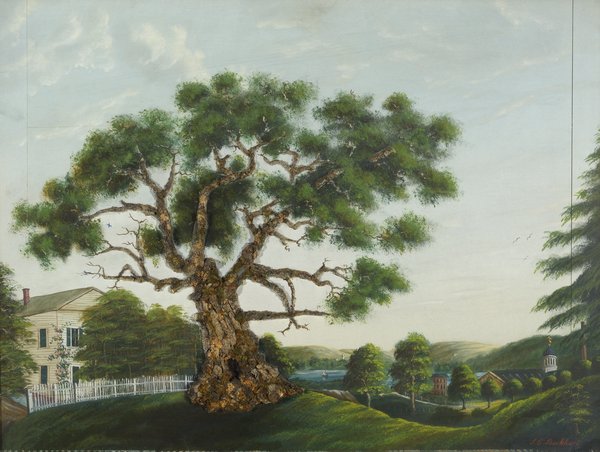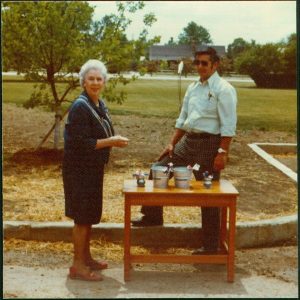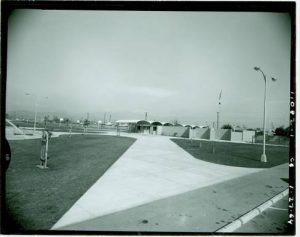Written by Greg Colati, Assistant University Librarian for University Archives, Special Collections & Digital Curation

Charter Oak, J.E. Burkhart. The Graphics Collection, The Connecticut Historical Society, Hartford. (1859) Retrieved from the Digital Public Library of America.
Every Connecticut schoolkid learns the legend of the Charter Oak and understands why so many things in the state are named “Charter Oak….” What we don’t always realize is just how far the Charter Oak story has traveled out from Connecticut as the American population moved West from the original 13 colonies.
The continuing story of the Charter Oak was revealed recently when the Connecticut Digital Archive, a program of the UConn Library, joined its 1.3 million digital resources about Connecticut history with the Digital Public Library of America’s 33 million images, texts, videos, and sounds from across the United States.
When we query the DPLA for “Charter Oak” we find not only the expected results from Connecticut, but some others that at first seem odd until we do some additional digging.

Charter Oak Stove & Range Company, Catalogue no. 9. Carnegie Library of Pittsburgh. (ca. 1909) Retrieved from the Digital Public Library of America
For example, take the catalog of the Charter Oak Stove Company of St. Louis Missouri . The Charter Oak stove was one of the most popular cooking stoves of the Victorian Era, it was manufactured by the Excelsior Stove company beginning in 1851. Giles Filley, founder of the company was born in Bloomfield, CT and named the stove after the Charter Oak to emphasize his support for the anti-slavery cause in border-state Missouri.

Charter Oak Dedication. Worthington Libraries. (1976-05-26) Retrieved from the Digital Public Library of America.
Planting oak trees as a symbol of liberty was brought along with the settlers from Granby, Connecticut who founded Worthington, Ohio in 1803. The tradition was still alive in the bicentennial year of 1976 when the Worthington Chapter of the DAR gave the Worthington High School an oak tree which was planted in soil from the site of the Charter Oak in Hartford.
Charter Oak, Iowa was founded by the American Emigrant Company of Hartford Connecticut in 1869. The Crawford County history website relates a story about the founding of Charter Oak, Iowa that has a ring of familiarity: “Our town received its name from the American Emigrant Company which was organized at Hartford, Connecticut. The story is told that, during the time the territory was being surveyed by that company, a sudden heavy cloudburst made it imperative for the surveyor to protect his maps and papers. He bundled them up and thrust them into a hollow spot of a large oak tree.” The Charter Oak Bank of Charter Oak Iowa issued bonds with patriotic scenes, but oddly no image of the Charter Oak itself.

View of the community building at Charter Oak Park. California Digital Library. (1964-01-27) Retrieved from the Digital Public Library of America.
Finally, we arrive at the Pacific Ocean, to Charter Oak Park, in the Charter Oak neighborhood of Covina California, a suburb of Los Angeles. According to local legend, and in an unusual twist to the Charter Oak tale, “lore suggests the tree towered above the rural rancho landscape of the 1800s, and served as a marker where Mexican officials buried a purloined American flag, important documents and gold.” And although there is some controversy in Covina about which tree is the actual Charter Oak, the naming of the neighborhood after the Connecticut Charter Oak is undisputed.
This story and many, many, more can be found among the primary sources available in the Connecticut Digital Archive, and the Digital Public Library of America.
